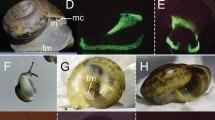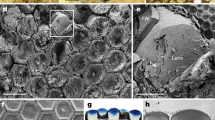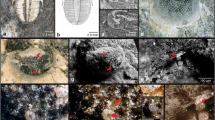Abstract
THE tapetum lucidum of the eye is a specialized layer lying behind, but adjacent to, the light-sensitive cells of the retina. It is specialized to form a reflecting surface so that any light not absorbed during its first passage through the light-sensitive cells is reflected back again and has a second opportunity to be absorbed. The tapetum is the basis of eye-shine in animals; it may be made up of crystals or of regularly arranged fibres1,2. Many fish, for example, have tapeta made of crystals of guanine, carnivores one of crystals of a complex of zinc-cysteine3, while herbivores such as the sheep and cow have fibrous tapeta. Man and the higher apes have no tapetum; but some lemurs have a well-developed one; the brilliant yellow tapetum of Galago monteiri is described by Johnson4, who says “… the background resembles burnished gold”. Rochon-Duvigneaud5 has found that both diurnal and nocturnal lemurs may have a tapetum. Kolmer6 agrees with this and notes that the tapetum of Lemur rufifrons, a diurnal lemur, is both crystalline and yellow. Luck7 has found that the eyes of Galago crassicaudatus agisymbanus, a nocturnal lemur, have a fluid vitreous body and a highly developed cellular tapetum which is brilliant gold in colour.
This is a preview of subscription content, access via your institution
Access options
Subscribe to this journal
Receive 51 print issues and online access
$199.00 per year
only $3.90 per issue
Buy this article
- Purchase on Springer Link
- Instant access to full article PDF
Prices may be subject to local taxes which are calculated during checkout
Similar content being viewed by others
References
Walls, G. L., “The Vertebrate Eye”, Cranbrook Inst. of Sci., Bull. 19 (1942).
Pirie, A., Endeavour, 17, 181 (1958).
Weitzel, G., Buddecke, E., Fretzdorff, A. M., Strecker, F. J., and Roester, U., Hoppe-Seyl. Z., 299, 193 (1955).
Johnson, G. L., Phil. Trans. Roy. Soc. (1901).
Rochon-Duvigneaud, A., “Les Yeux et la Vision des Vertébrés” (Masson, Paris, 1943).
Kolmer, W., Z. ges. Anat., 93, 679 (1930).
Luck, C. P., Nature, 181, 719 (1958).
Duggan, D. E., Bowman, R. L., Brodie, B. B., and Udenfriend, S., Arch. Biochem. Biophys., 68, 1 (1957).
Bowness, J. M., and Morton, R. A., Biochem. J., 51, 530 (1952).
Sakate, H., Nagoya J. Med. Sci., 18, 203 (1956).
Guilliermond, A., “The Cytoplasm of the Plant Cell” (Chronica Botanica, New York, 1941).
Euler, H. von, and Adler, E., Hoppe-Seyl. Z., 228, 1 (1934).
Dodt, E., and Walther, J. B., Pflügers Arch., 266, 167, 175 (1958).
Dodt, E., Amer. J. Ophth., 46, No. 3, Part 2, 87 (1958).
Granit, R., “Sensory Mechanisms of the Retina”, 196 (Oxford Univ. Press, 1947).
Author information
Authors and Affiliations
Rights and permissions
About this article
Cite this article
PIRIE, A. Crystals of Riboflavin making up the Tapetum Lucidum in the Eye of a Lemur. Nature 183, 985–986 (1959). https://doi.org/10.1038/183985a0
Issue Date:
DOI: https://doi.org/10.1038/183985a0
This article is cited by
-
A highly reflective biogenic photonic material from core–shell birefringent nanoparticles
Nature Nanotechnology (2020)
-
Guanine crystals regulated by chitin-based honeycomb frameworks for tunable structural colors of sapphirinid copepod, Sapphirina nigromaculata
Scientific Reports (2020)
-
Functional metabolite assemblies—a review
Journal of Nanoparticle Research (2018)
Comments
By submitting a comment you agree to abide by our Terms and Community Guidelines. If you find something abusive or that does not comply with our terms or guidelines please flag it as inappropriate.



